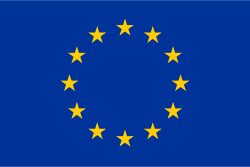Europe Registers Hottest March on Record Amid Climate Concerns

The closure of the Ukrainian gas pipeline on January 1, 2025, marks a significant shift in Europe's energy landscape, following Ukraine's decision not to renew its contract with Russian gas giant Gazprom. The pipeline, which has operated for over 50 years, had already seen reduced flows but the complete shutdown now poses pressing challenges for several European nations.
Moldova has emerged as the most affected country, struggling to cope without gas supplies. Authorities had anticipated this development but have not found viable alternatives, leaving citizens in the cold amid winter conditions. The International Energy Agency has urged European partners to assist Moldova in securing essential energy needs.
Countries like Slovakia and Hungary, which previously relied heavily on this pipeline, are seeking alternatives, albeit with less urgency than Moldova. Slovakia now faces increased costs—nearly €180 million in 2025—to secure gas through neighboring routes. Hungary is looking to double its imports of Russian gas via Turkey, adapting to the new reality of relying on the TurkStream pipeline.
The end of gas supplies through Ukraine highlights the divided interests within the European Union, as some member states, like Hungary and Slovakia, maintain close ties with Moscow, while others, such as Poland, have pledged to support Ukraine with electricity exports.
Despite the challenges, analysts suggest that overall gas supply security in Europe remains stable, particularly since the pipeline accounted for less than 5% of the continent's gas needs before the cutoff. However, the cessation of these supplies may lead to rising prices, as the demand for liquefied natural gas (LNG) imports increases, straining global gas markets further.
As Europe navigates this transition, the management of underground gas storage facilities will become crucial in meeting winter demand while preparing for a summer resupply effort.


